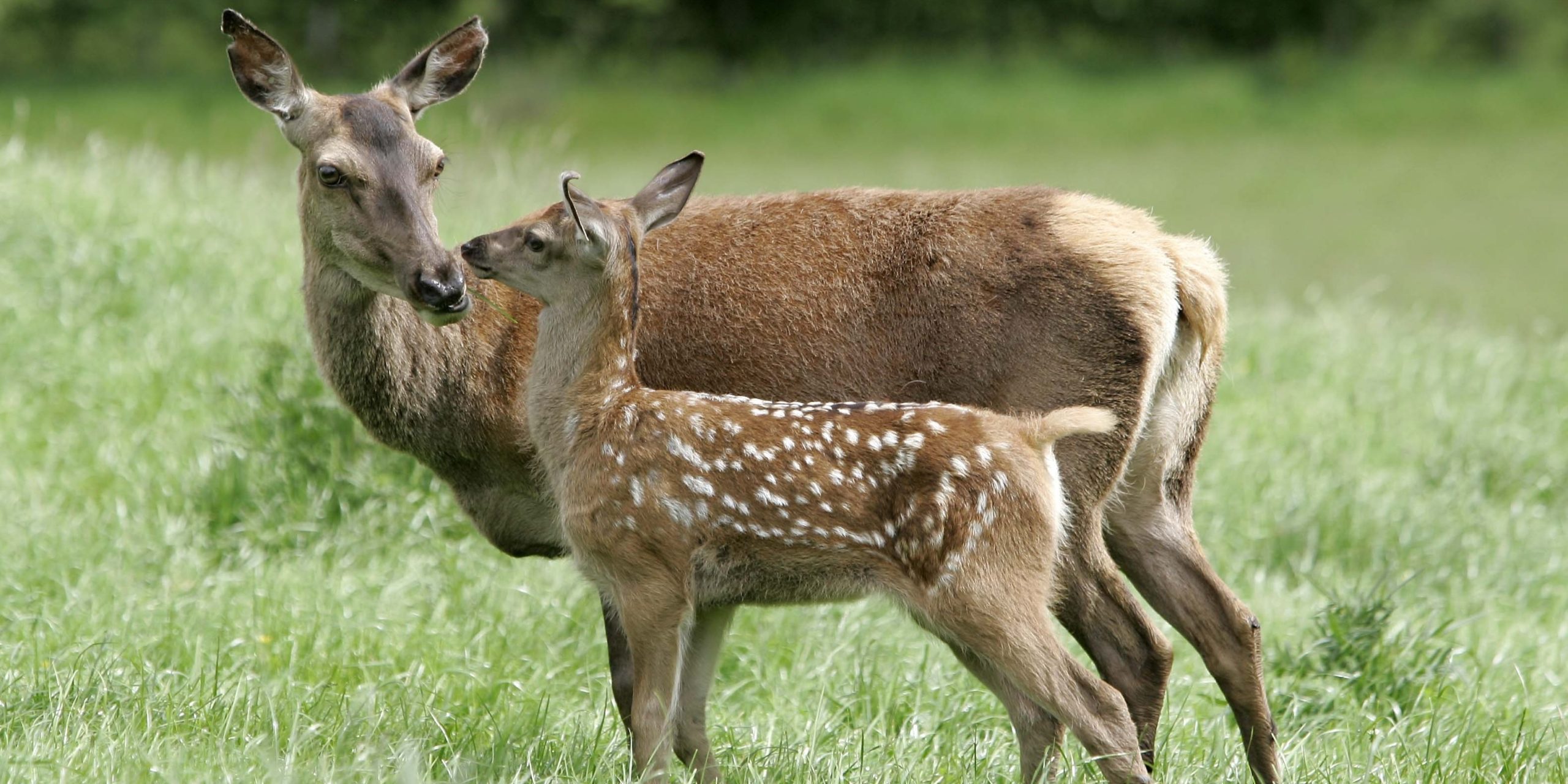
Thistle the red deer: Abandoned exile, TV star, reference genome
To mark the recent publication of our Genome Note for the red deer, we look back on the eventful life of Thistle, the ‘celebrity’ hind that provided the blood samples from which the genetic information was extracted. Her owner, John Fletcher, a leading specialist in the management of deer and control of deer diseases, reflects on Thistle’s extraordinary life and her original island home of Rum.
Update: Thistle passed away on January 14, 2022. Her continued legacy for science is explored in this article.
A history of Rum, Thistle’s island home
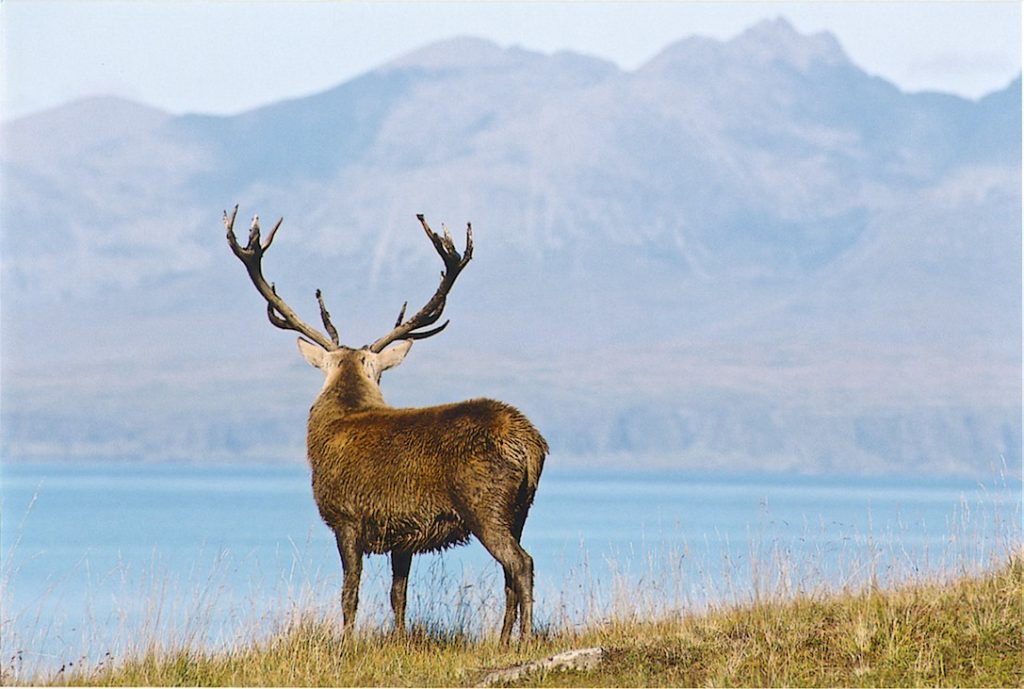
Rum, like most Scottish islands, has a fascinating history. Largely mountainous, few people lived on Rum until the eighteenth century. But with the introduction of the potato and also smallpox vaccination, the human population grew during the eighteenth and nineteenth centuries.
By the end of that period there were more people than the island could support; the woodlands and the native population of red deer had been eliminated and eventually everyone was evacuated – or ‘cleared’ – in one or two ships to Cape Breton in Nova Scotia between 1826 and 1828.
Sheep and shepherds were then introduced, but imports of wool and sheep meat from Australia and New Zealand soon made that uneconomical. In 1845 the island was bought, deer were introduced, and it was run as a sporting estate until in 1957 the owners sold it to the Scottish Nature Conservancy.
It became a nature reserve described by the Nature Conservancy as ‘an outdoor laboratory’. By this time there were over 1,200 red deer on the 10,500 hectares (26,000 acres) and the research programme of which Thistle was to be a part was born.
Part of a proud scientific pedigree
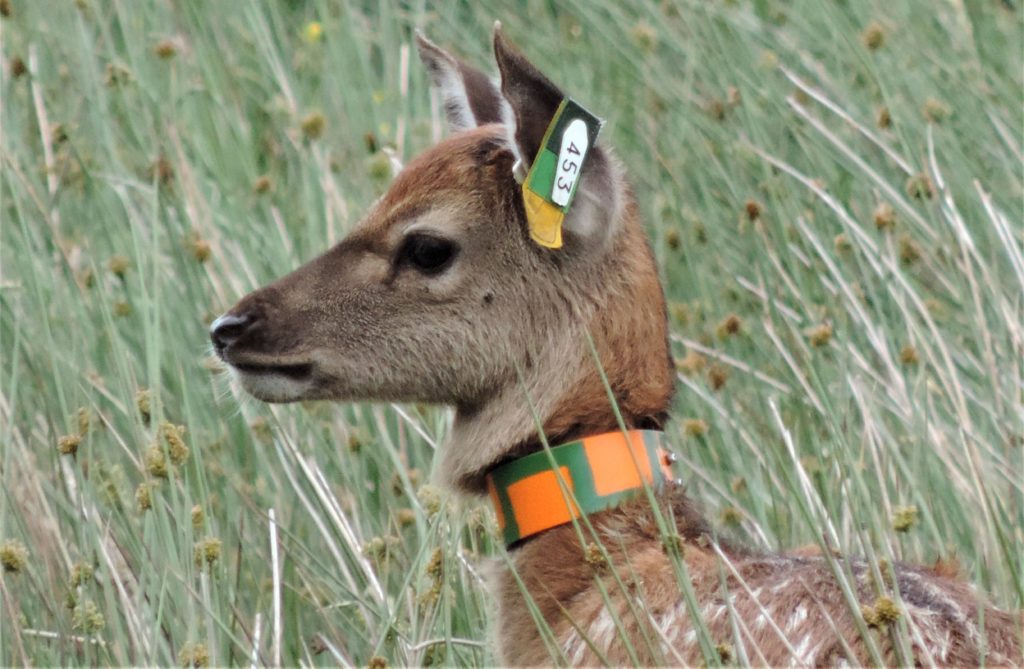
Thistle’s red deer forebears on Rum were an obvious target for research, but actually catching them was a problem. The development of the drugs and techniques for remote delivery by darting was in its infancy but Roger Short from Cambridge University veterinary school became involved and a number of stags were lured into feeding stations and duly tranquilised and marked with ear tags and collars.
Gerald Lincoln, one of Roger’s PhD students did pioneering work in unravelling the hormonal controls of the antler cycle and the changes which lead up to the rut as well as the ways in which changes in day length control the hormones. I was lucky in following Gerald and was able to use red deer as models to further investigate the ways in which the sex hormones can influence behaviour and physiology in both sexes.
Fiona Guinness helped me in my work but also developed a profound knowledge of the hinds and their behaviour, learning to recognise almost all the hinds and stags in the northern part of the island despite them being unmarked.
In 1972 Tim Clutton Brock from the Department of Zoology at Cambridge joined Fiona in studying their social behaviour and reproductive performance. Josephine Pemberton from Edinburgh University joined the group at an early stage and in 2005 took over the project from Tim and was able to analyse the genetics of the population.
Most deer in the study area were marked by ear tagging and collaring, either by darting or during the first few days of life when calves can be easily handled. This allowed visiting scientists to assist in the study and, over many years, measures of lifetime reproductive success, dominance hierarchy, and much more, allowed the team to build up a detailed understanding of the red deer population.
‘Trotting upstairs to lie down on a bed’
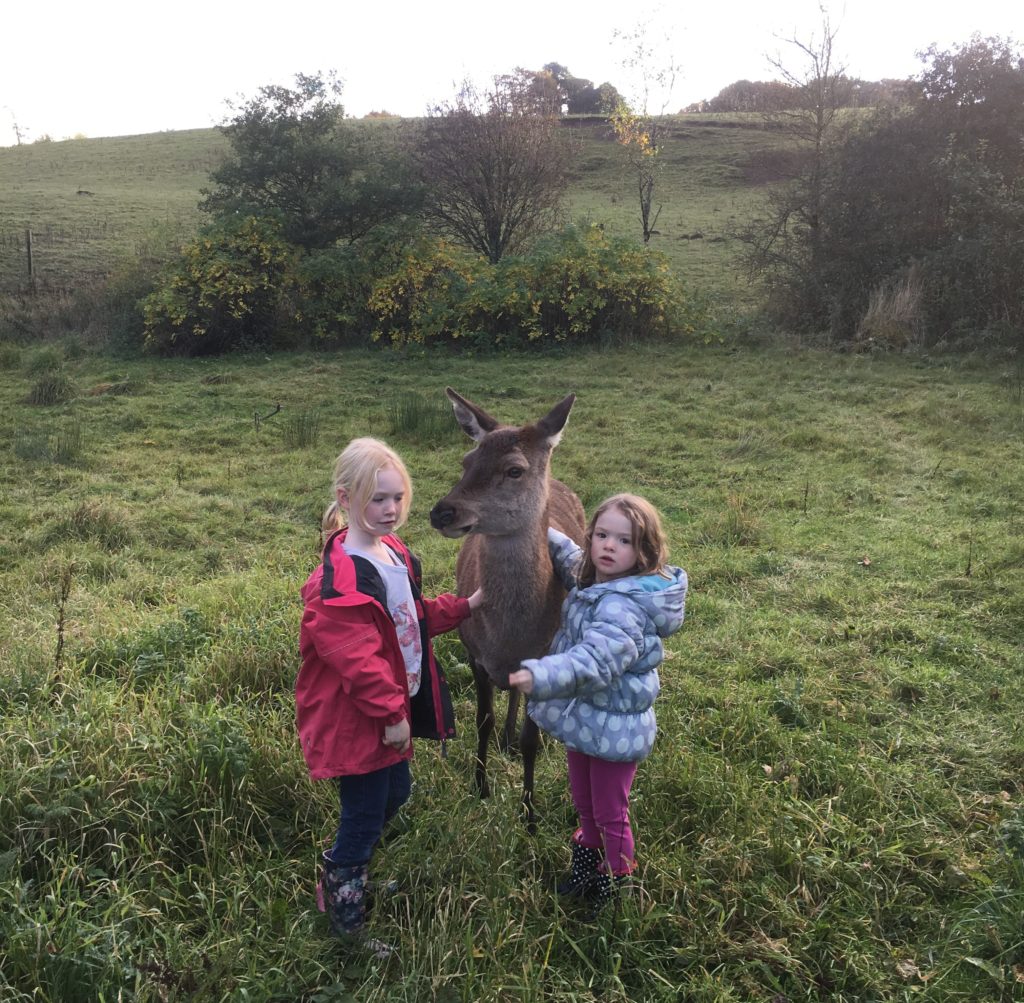
It was as a result of the programme of catching calves at a few days old that Thistle, born in 1993, came to be hand reared. The research workers had become very skilled at locating calves and marking them so that hinds rarely took exception to the procedure but unfortunately Thistle’s mother responded badly, abandoning her calf.
Fiona took the orphan under her wing and proceeded to bottle feed her. It became clear that reintroducing her into the wild herd on Rum would have been very unsuccessful and Fiona generously offered the calf to me after she had initiated all the hard work of bottle feeding her.
Thistle travelled to Auchtermuchty in Fife where I had established a commercial deer farm in 1973. I was therefore already well placed to take the young calf on, but also had two young daughters eager to continue the hand rearing. This had the effect of making Thistle a member of the family and she was not averse to trotting upstairs to lie down on a bed.
Star of schools and the small screen
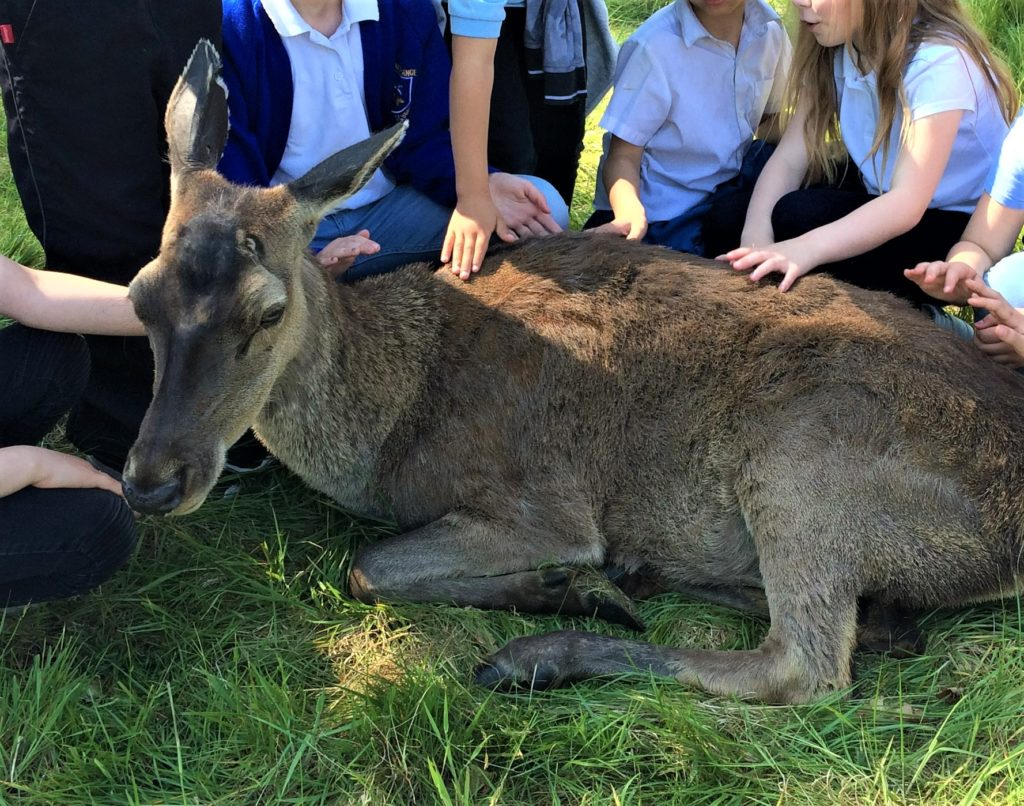
As the years went by her familiarity with humans made Thistle a popular asset for filmmaking. An early appearance was in 1994 as a calf with Emma Thompson in the television film ‘Blue Boy’. Several others followed, including another television film in which she had to appear as though entangled in a fence for which I had to find a dummy double and lie out of shot inflating lungs by blowing into a tube.
There followed several television commercials, art house shorts and most recently, as a grand dame in her final appearance in a 2019 Bollywood feature film. Often she had proved rather too tame to create the wild atmosphere that most producers were looking for but was always biddable and relaxed.
One of the roles outside of filming which she seemed to enjoy was meeting children through the Royal Highland Educational Trust which aims to educate Scottish children from urban backgrounds in the role of agriculture.
Grand finale: reference genome for her species
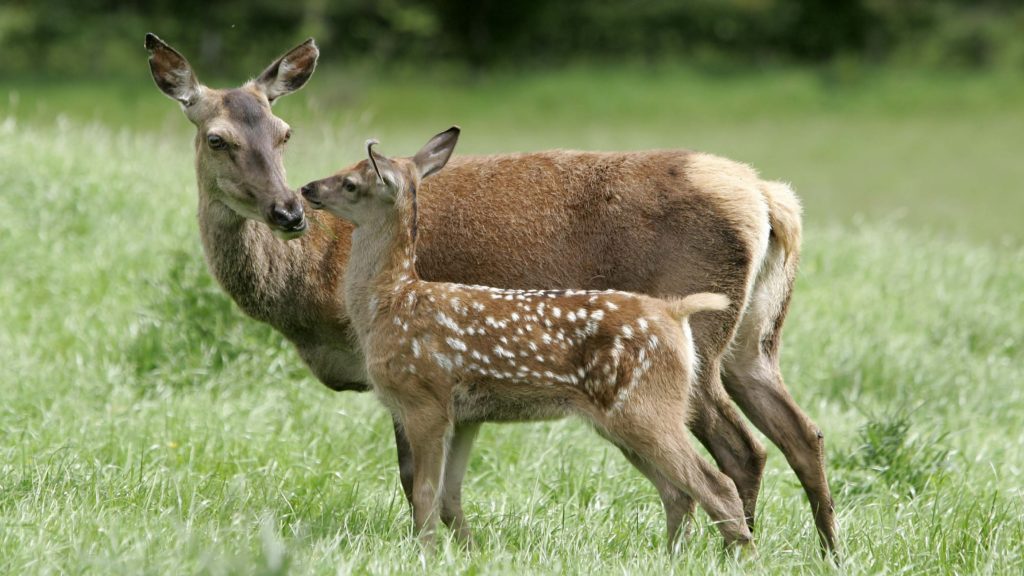
Although she produced many calves, Thistle was never at home with other deer and eventually we felt it kindest to keep her by herself in her own sheltered paddock.
Josephine Pemberton was approached by Mark Blaxter, project lead for Darwin Tree of Life at the Wellcome Sanger Institute, who was seeking blood samples from red deer in order to generate the a full-genome sequence for the species. Mark’s father, Sir Kenneth Blaxter, had as Director of the Rowett Research Institute in the 1960s pioneered the idea of farming red deer in Scotland and had always been an inspiration to me in my career.
I was obviously delighted to help and as we were taking routine blood samples in order to monitor Thistle’s health it was a simple matter for me to supply the residues.
Thistle still lives here today, at the venerable age of 28 – quite possibly the oldest documented red deer in the world, and easily outlasting the longest-lived wild hind recorded on Rum, who reached 25 and a half.
